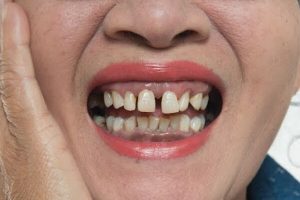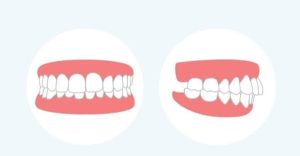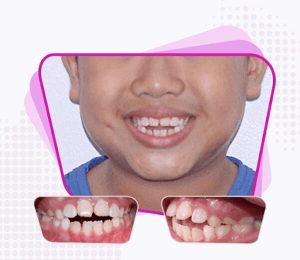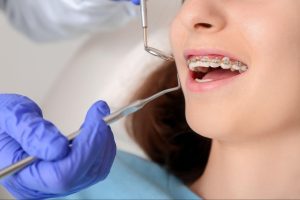Table of content
- 1. What is malocclusion? How many types of malocclusion are there?
- 2. Signs of misaligned bite
- 3. Causes of malocclusion
- 4. Is Malocclusion Serious? How does it affect the patient?
- 5. How to treat malocclusion?
- 6. When is the best time to get braces for misaligned teeth?
- 7. Where is the Best Place to Get Treatment for Malocclusion?
- 8. Successful Malocclusion Cases at Elite Dental
Malocclusion is a condition that affects many people, although not dangerous, it significantly impacts both aesthetics and chewing function. Elite Dental, known for its deep expertise and experience in treating misaligned bites, many patients have sent questions such as What is a misaligned bite? Is misaligned bite a problem? Today, Elite Dental will answer these questions in the most detailed way! Is it serious? Today, Elite Dental will provide detailed answers to these questions.
1. What is malocclusion? How many types of malocclusion are there?
Malocclusion is a condition in which the upper and lower jaws are misaligned and do not fit together, causing facial aesthetics, affecting chewing function, and increasing the risk of oral diseases such as gingivitis, periodontitis, etc.
Currently, there are 5 common types of malocclusion: overbite, underbite, open bite, deep bite, and crossbite with different symptoms.
1.1. Overbite
Individuals with an overbite often sleep with their mouths open or have difficulty closing their mouths completely (in severe cases), when looking sideways and when smiling the upper jaw protrudes beyond the lips.
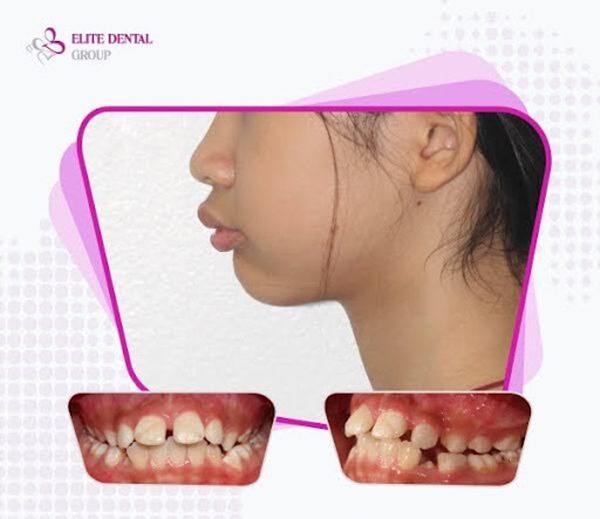
1.2. Underbite
This condition occurs when the lower jaw is overdeveloped, causing the lower jaw and chin to protrude forward, covering the upper jaw. When viewed from the side, a person with an underbite will have a face shaped like a plow.
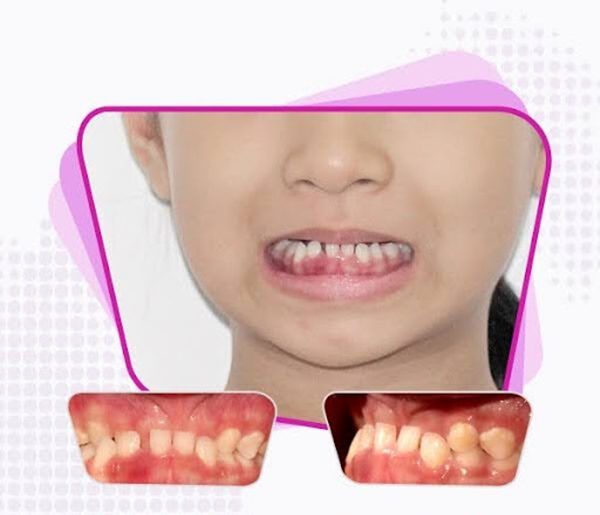
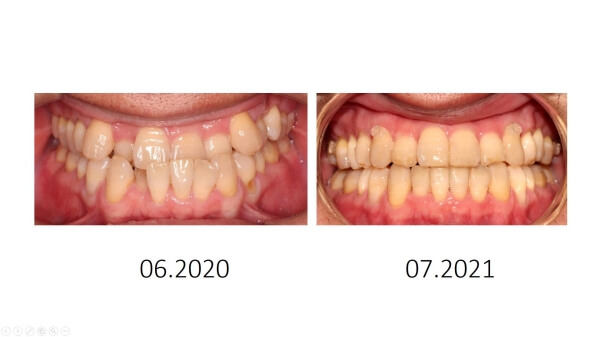
1.3. Open bite
This is a condition where the upper and lower jaws do not fit together, especially the incisors cannot close tightly, the tongue can be seen even when the teeth are at rest.
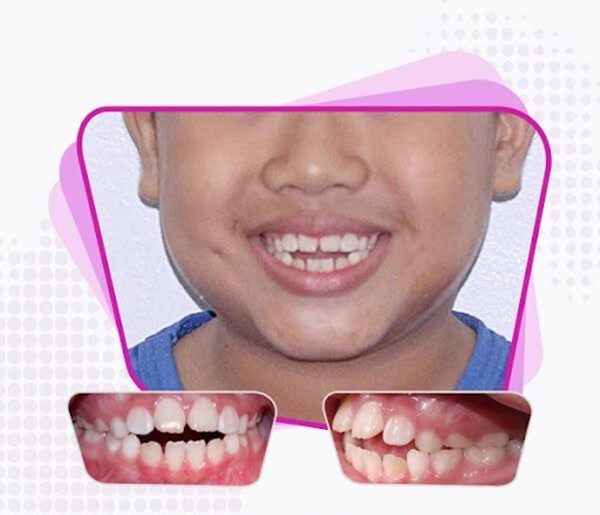
1.4. Deep bite
This is a condition where the upper teeth cover ¾ of the lower teeth. People with deep bites often have exposed gums and a short face.
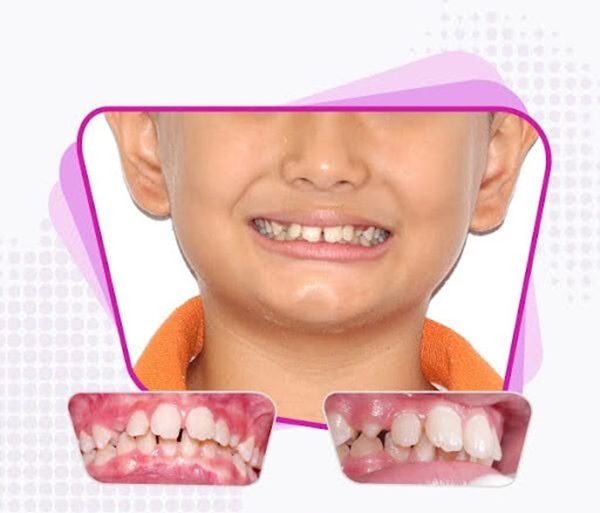
1.5. Crossbite
This is characterized by the upper teeth being misaligned, the upper jaw is located inside the lower jaw and has a disorderly protrusion, causing irregularities and disrupting the symmetry of the bite. Crossbite is often not clearly shown on the outside like overbite or underbite, affects overall appearance when smiling.
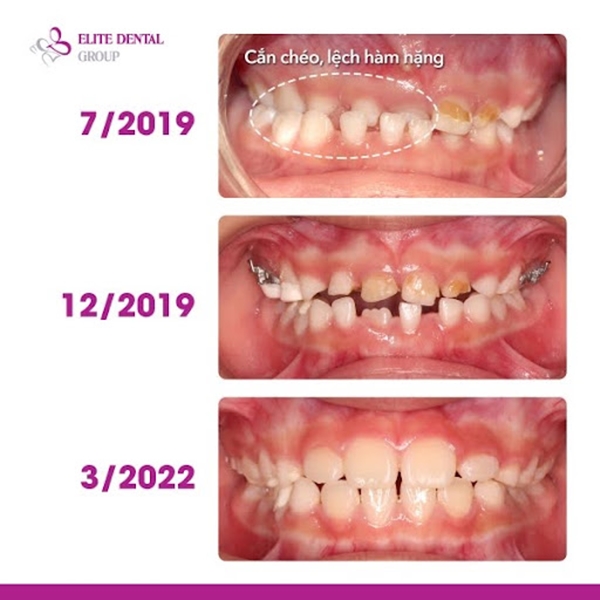
2. Signs of misaligned bite
Depending on each case of malocclusion, the symptoms will be different. However, patients can often recognize this condition through several signs:
- The difference in teeth can be observed when biting down.
- Frequent biting of the tongue or the inside of the mouth during eating or speaking. Additionally, patients may experience jaw fatigue due to the misalignment.
- Difficulty in pronunciation, and unclear speech.
- Difficulty closing the mouth and jaws, often leading to mouth breathing.
3. Causes of malocclusion
After researching jaw misalignment through thousands of cases and with high expertise, the specialists at Elite Dental have identified several potential causes of malocclusion:
- Genetics: If a family member (grandparents, parents) has a misaligned bite, there is a higher likelihood that the next generation will also suffer from this condition.
- Trauma: Injuries that cause fractures or misalignment of the jaw can result in malocclusion.
- Bad habits: During the tooth replacement process, habits like thumb sucking, tongue thrusting, or prolonged use of pacifiers can contribute to misaligned teeth.
- Due to inappropriate dental treatment: Previous dental treatments, such as fillings, crowns, or other restorations performed with poor technique, low-quality materials, or by unqualified dentists, can lead to malocclusion.
Other factors that may contribute include extra teeth, missing teeth, early loss of primary teeth, jaw impacts, and abnormally shaped teeth can also easily cause misaligned teeth.
4. Is Malocclusion Serious? How does it affect the patient?
Not only malocclusion but any dental misalignment also affects the quality of daily life and aesthetics. Below are the harmful effects of malocclusion:
4.1. Impact on oral health
When the bite is misaligned, the teeth will be concave and convex, making oral hygiene more difficult, even having crevices that the toothbrush cannot reach. This makes it easy for bacteria to grow and cause oral diseases such as tooth decay, periodontitis, gingivitis, etc.
4.2. Impact on chewing function
A misaligned bite can impair chewing. When chewing, misaligned teeth cannot distribute force evenly and strongly like normal molars, requiring greater effort to bite and chew food. Prolonged excessive force can lead to broken teeth, muscle spasms, and temporomandibular joint problems.
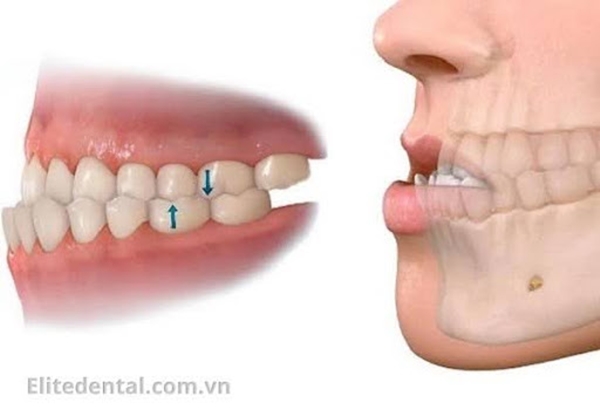
4.3. Effects on pronunciation
Many individuals struggle with speech clarity or have lisping due to misaligned bites, which prevent the tongue and lips from moving smoothly, affecting communication and leading to potential challenges in professional and social interactions. This can result in feelings of self-consciousness and discomfort.
4.4. Impact on facial aesthetics
Malocclusion often results in facial imbalance, and disharmonious features, especially the mouth, jaw, and chin are most affected. People with misaligned bites typically have an asymmetrical face, which can become more noticeable when they smile, potentially leading to self-esteem issues.
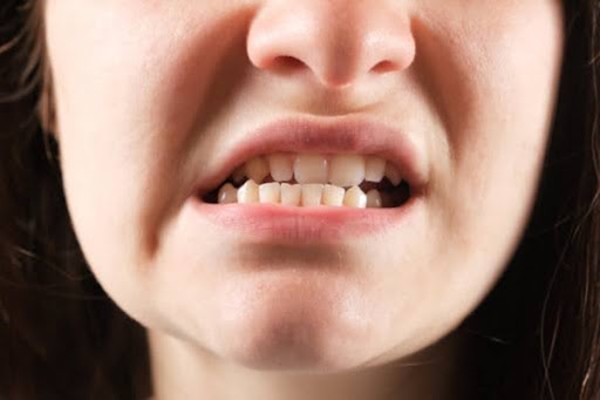
5. How to treat malocclusion?
Based on the patient’s condition regarding the severity and specific characteristics of the misalignment. Here are some common treatment methods available today:
5.1. Orthodontics
Orthodontic treatment for malocclusion is a method of using specialized orthodontic appliances to move misaligned teeth and jaws to the correct position, correcting malocclusion problems (open bite, deep bite, crossbite, etc.). There are many orthodontic methods to choose from, such as:
5.1.1. Metal braces
Customers wear braces made of alloy or titanium attached to the tooth surface, the archwire is fixed in the bracket and secured to move the teeth to the desired position according to the orthodontist‘s plan. The advantages of metal braces include their cost-effectiveness and suitability for all types of malocclusion, especially complex cases such as malocclusion, and excessively crooked teeth. However, the limitation of metal braces is that they are not aesthetically pleasing, causing inconvenience when eating, chewing, and communicating.
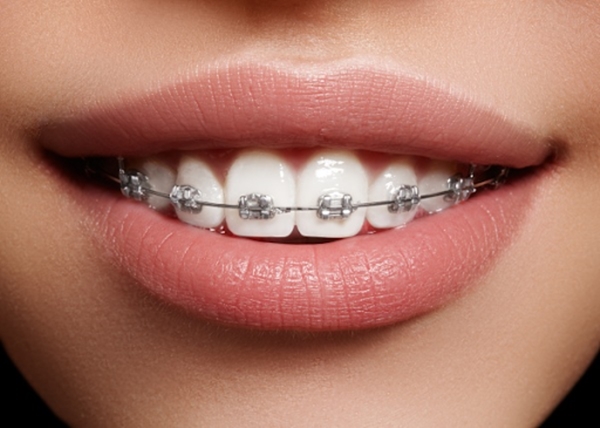
Learn more about traditional braces: > Comparison between ceramic braces and metal braces > Comparison between regular braces and self-ligating braces
5.1.2. Ceramic braces
Customers wear braces made from small, delicate ceramic materials and archwires similar to metal braces. Some people choose this orthodontic technique because of its high aesthetics, helping them to communicate comfortably. However, ceramic braces are prone to breaking if not carefully and have a longer treatment time than metal braces.
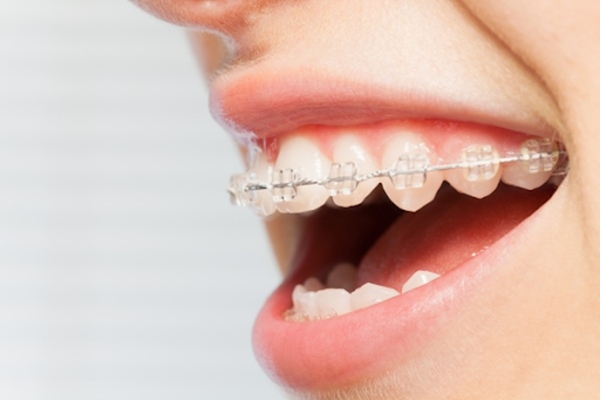
5.1.3. Invisalign Clear Aligners
If you want to enhance the aesthetics and comfort during the braces process, Invisalign clear braces are the right choice. This method involves wearing clear trays that fit snugly over the teeth and applying gentle pressure to move the teeth and jaws into the correct positions. In particular, by applying the method of braces for misaligned bites with Invisalign, you can be completely confident in daily communication, because clear braces are very difficult to detect. Moreover, the material of Invisalign trays is made from bioplastic, so it is safe for all users.

However, the price of Invisalign clear braces is higher than that of braces. Therefore, it is advisable to thoroughly research and plan your finances accordingly.
Common Questions About Orthodontic Treatment for Malocclusion
– Is orthodontic treatment for malocclusion effective?
Braces are a minimally invasive method, but achieve maximum effectiveness:
- Adjust the bite to standard, ensuring balance between the upper and lower jaws.
- Significantly improves chewing ability.
- It enhances a balanced face and cures facial asymmetry.
- The smile becomes natural and perfect, helping many people to be confident.
– How much does orthodontic treatment for malocclusion cost?
The cost of braces for misaligned teeth at Elite Dental depends mainly on the method:
| Orthodontic method | Price |
| Metal braces | 60,000,000 – 75,000,000 VND |
| Ceramic braces | 75,000,000 – 90,000,000 VND |
| Invisalign clear braces | 62,500,000 – 137,500,000 VND |
To help manage the financial burden of treatment, Elite Dental offers a 0% interest installment plan for orthodontic treatments. You can view detailed pricing information HERE.
5.2. Use of instruments
For young children, whose jawbones are still developing, the treatment of malocclusion will be easier and more effective. Therefore, for most children from 6 to 12 years old, in addition to applying orthodontic techniques, the doctor will use additional appliances to achieve high efficiency, comprehensiveness, and long-term stability, long-lasting results such as jaw surgery when they are adults.
After a general examination and dental X-ray, the doctor will consider choosing the appropriate appliance. Currently, there are 4 common types of appliances in the treatment of malocclusion in children: EF (functional orthodontic appliance), Headgear (appliance to correct protruding jaws), Face mask (for correcting underbites), Quad – Helix (for expanding the jaw).
View more: Braces for Kids: Key Facts Parents Need to Know
5.3. Jaw surgery
Jaw surgery is a method used to treat severe malocclusion that cannot be treated with braces. With this method, the patient will have their bone cut or added depending on the condition of the jaw defect. Although it is effective in treating bone-related malocclusion, to ensure safety, jaw surgery is only performed when the patient is over 18 years old and the jaw bone has fully developed when orthodontics cannot help resolve these severe malocclusions.
In addition, some cases of mild bite misalignment that are not related to the jaw bone can be treated with cosmetic porcelain crowns. However, this is only a temporary solution, so patients need to consider when performing it.
6. When is the best time to get braces for misaligned teeth?
The best time to achieve results when treating malocclusion is between 6 and 12 years old. At this stage, the teeth and jawbone have not fully developed, making it easier for the dentist to adjust and align the teeth into the standard physiological bite position. Moreover, treating malocclusion at this time is also quick, less painful, and avoids the need for complex treatments in adulthood.
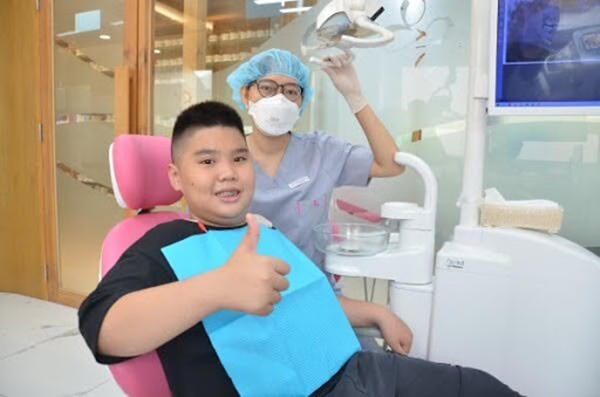
7. Where is the Best Place to Get Treatment for Malocclusion?
Orthodontics is a difficult technique, requiring doctors to have high professional skills and extensive knowledge to understand the condition of the teeth and jaws to develop an appropriate treatment plan and give customers a charming smile. To avoid potential mistakes, it’s crucial to research and choose a reputable dental clinic before starting treatment for malocclusion.
Elite Dental is proud to be a dental center with a team of highly specialized doctors with more than 10 years of experience in treating malocclusion. Our dentists continually enhance their skills through regular advanced training abroad. With their in-depth knowledge and extensive experience, they can detect even the smallest abnormalities in each bite and create a customized treatment plan. Over the years, Elite Dental has owned a ‘bank’ of successful braces, helping customers regain a standard bite, thereby improving chewing function and facial aesthetics.

Many people who’ve undergone orthodontic treatment notice more than just straighter teeth; braces can actually reshape the face, making it appear slimmer and more defined. But is this truly the case? Today, Elite Dental explores this question in depth. 1. Do Braces Change Your Face Shape? Braces work by gently…
During the process of treating malocclusion at Elite Dental, customers will be able to use advanced equipment imported from Europe such as 3D Trios dental scanning technology, Clincheck software, Sirona X-ray machine, etc. to help speed up the treatment process, reduce pain, and bring good results.
8. Successful Malocclusion Cases at Elite Dental
Case 1
A 5-year-old child (with baby teeth) was brought to Elite Dental by their parents with a crossbite—a type of malocclusion where one side of the upper molars was positioned inside the lower jaw, causing difficulty in chewing and facial distortion. However, after just 5 months of braces treatment by Elite Dental’s orthodontists, the crossbite was corrected, and the child’s tooth eruption process proceeded normally. The child is currently continuing their follow-up care for tooth eruption at Elite Dental. For malocclusion cases, early intervention with braces is generally more effective.

Case 2
LV (11 years old) received a 2-phase combination treatment at Elite Dental to correct jaw expansion and reduce overbite and deep bite. Phase 1: involved expanding the upper jaw and repositioning severely misaligned premolars with an expander.. Phase 2: the child wears 55 Invisalign clear braces combined with elastics, completing the overbite reduction without tooth extraction.
Case 3
Hai Huong (19 years old) came to Elite Dental with a crossbite and a narrow jaw, resulting in crowded, aesthetically unpleasing teeth. This caused her to frequently press her lips together and avoid smiling. After examination and X-rays, the dentists identified the case as challenging due to the fully developed jaw structure. Treatment required patience and advanced techniques. After over 4 years with Elite Dental, Hải Hương now has a well-aligned bite, significantly transforming her facial appearance. She smiles more freely and feels much more confident.
In general, although malocclusion is not dangerous, it has a significant impact on aesthetics and chewing ability, thereby affecting the quality of life. Therefore, if you have signs of malocclusion, you should go to a reputable dental clinic for treatment as soon as possible.. If you have any questions or concerns, don’t hesitate to reach out to Elite Dental for prompt advice!
Related posts: > Receding Chin Explained: Key Signs, Causes, and Remedies > Can Braces Correct Spaced Teeth? Treatment Time and Cost > Is Invisalign Suitable for Fixing Severe Teeth Crowding?



